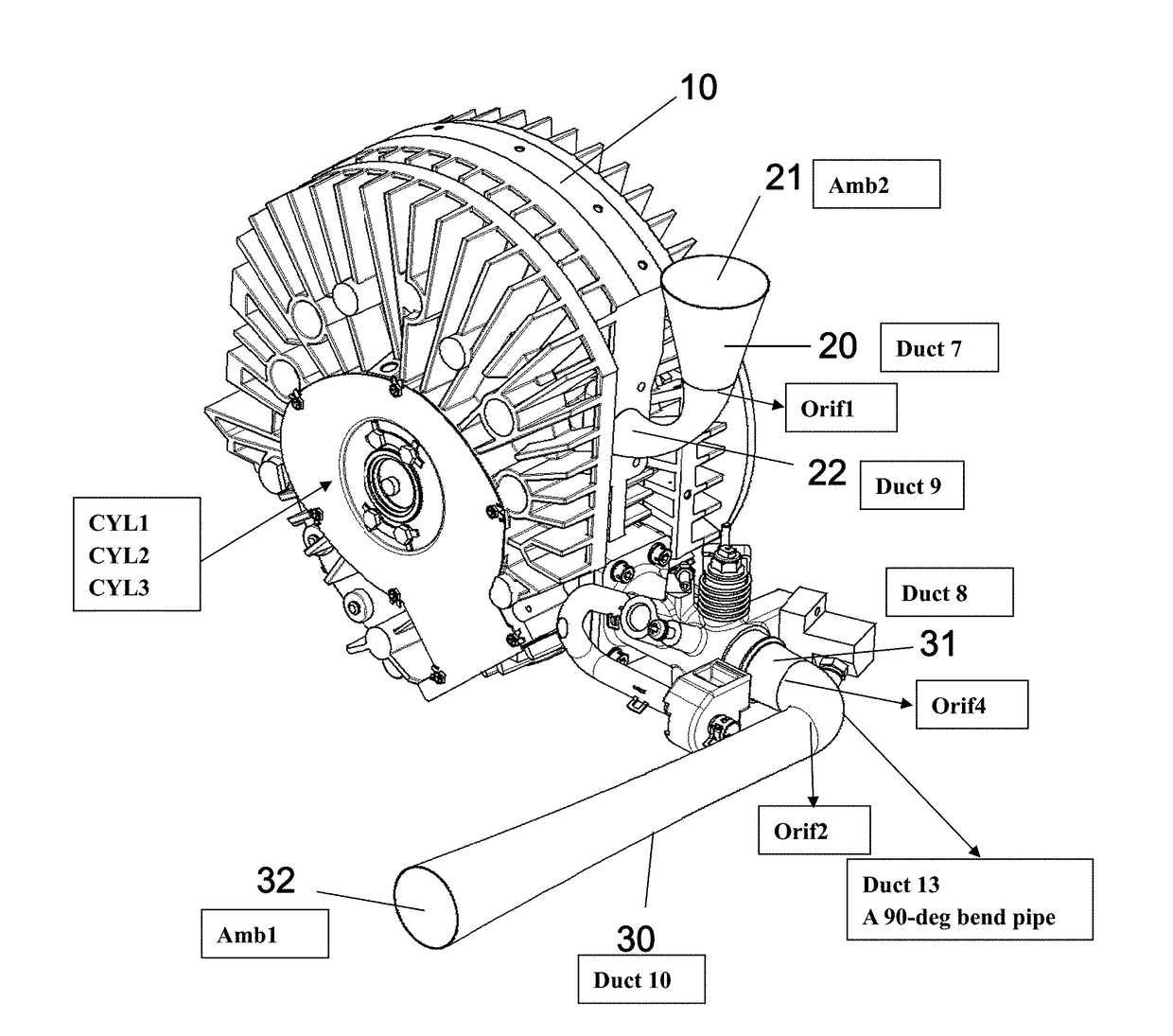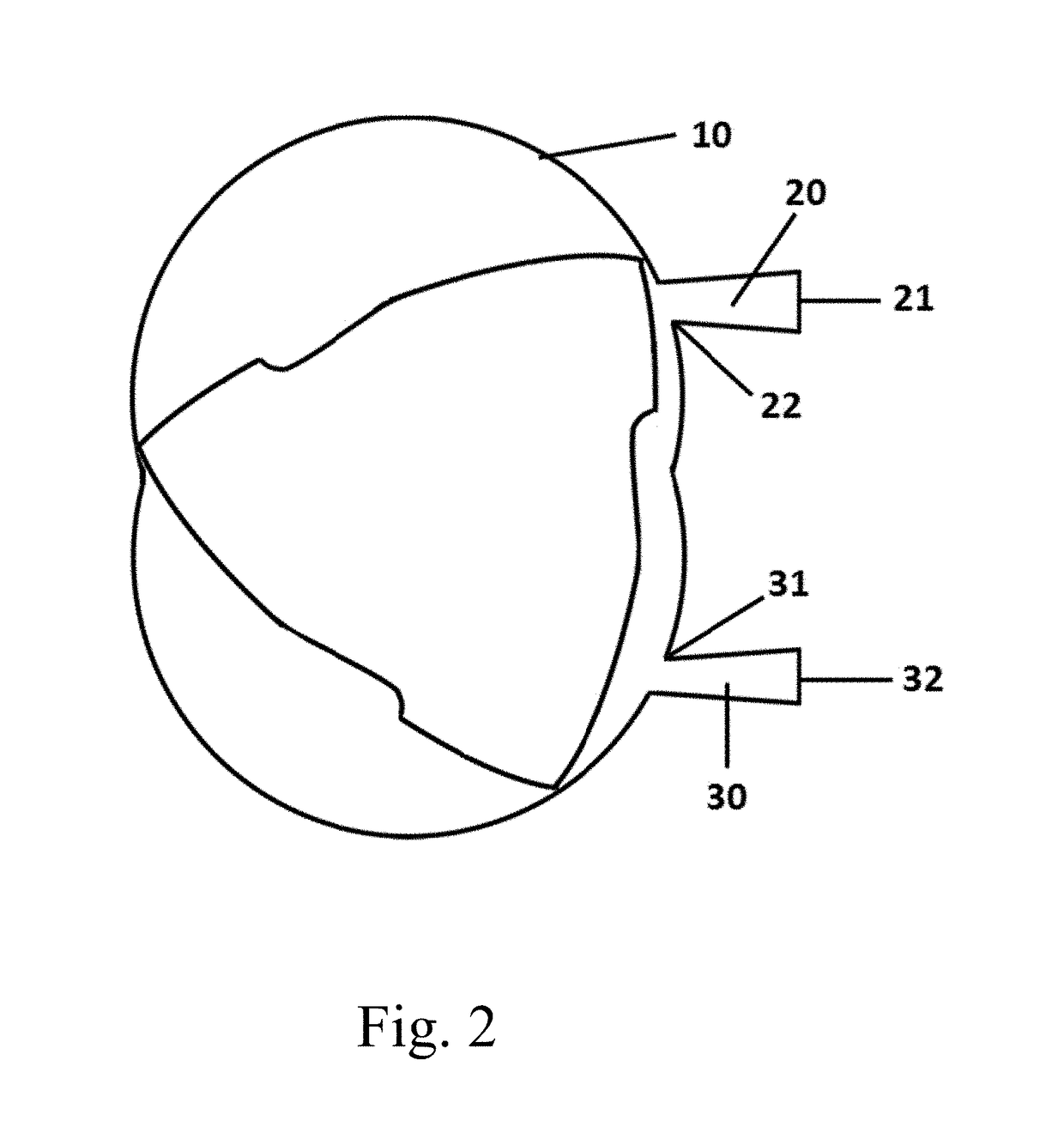Intake/outlet pipe optimization method for rotary engine
- Summary
- Abstract
- Description
- Claims
- Application Information
AI Technical Summary
Benefits of technology
Problems solved by technology
Method used
Image
Examples
embodiment 1
[0054]Refer to FIGS. 3 and 4 for a schematic diagram showing the shape and angle of an intake / outlet pipe of a rotary engine according to the present invention; and a perspective view of an intake / outlet pipe optimization rotary engine according to the present invention. As shown in FIGS. 3 and 4, a rotary engine body 10 is provided, and the engine supplies a power of 32 horsepower with original intake / outlet (approximately equal to 22.37 KW) at 6800 revolutions per minute (rpm). The outlet pipe 30 geometry is fixed in length, diameter and pipe shape. The tapered intake pipe 20 has a pipe diameter of 31.5 mm at the engine side, 8-degree pipe taper angle, a pipe length variation from 50 mm-1000 mm, and an engine performance test is conducted to obtain a test result showing that the length of the intake pipe can affect the engine performance and peak at around 700 mm in length about 16.8% .
embodiment 2
[0055]A rotary engine body 10 is provided, and the engine supplies a power of approximately 32 hp. Under a rotation speed of 6800 revolutions per minute (rpm), the pipe length, pipe diameter and pipe shape of the inversely tapered outlet pipe 30 are fixed, and the intake pipe 20 has a pipe length of 400 mm, a constant pipe taper angle of 2 degrees, and pipe diameter variation from 25 mm-40 mm at the engine side, and an engine performance test is conducted to obtain a test result showing that the diameter of the intake pipe can affect the engine performance and peak the output power by 16.9% at 35 mm in diameter.
[0056]Summing up the above, in the present invention, the rotary engine power output performance can be enhanced by a design that optimizes the pipe length, pipe diameter, pipe shape, and pipe angle of the intake / outlet pipe simultaneously, to provide an optimized combination of pipe length, pipe diameter, pipe shape, and pipe angle for various intake / outlet pipes of the rota...
PUM
 Login to View More
Login to View More Abstract
Description
Claims
Application Information
 Login to View More
Login to View More - R&D
- Intellectual Property
- Life Sciences
- Materials
- Tech Scout
- Unparalleled Data Quality
- Higher Quality Content
- 60% Fewer Hallucinations
Browse by: Latest US Patents, China's latest patents, Technical Efficacy Thesaurus, Application Domain, Technology Topic, Popular Technical Reports.
© 2025 PatSnap. All rights reserved.Legal|Privacy policy|Modern Slavery Act Transparency Statement|Sitemap|About US| Contact US: help@patsnap.com



